White Bean Bread with Rosemary is velvety smooth, has a nice golden brown crust, and a wonderfully fine, moist crumb. Not to mention a heavenly aroma due to the inclusion of rosemary.
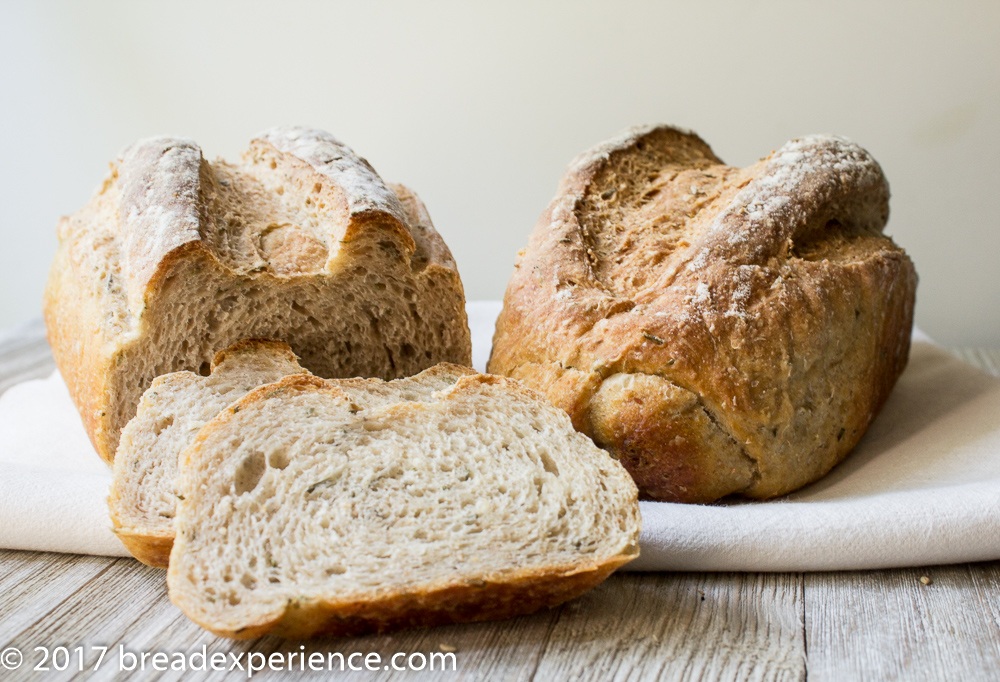
This white bean bread melts in your mouth
Bean bread is the monthly bake for the Bread Baking Babes. I read the description and thought, “Velvety bread, now that’s what I’m talking about!”
It wasn’t until I made the dough, felt it between my fingers, and tasted the finished loaves, that I knew just what it meant. It melts in your mouth! That’s what it means.
I’ve made bread with bean flour before, but not with bean puree. I was already fascinated with using bean flour in breads and now I’m captivated with using bean purees. So smooth!
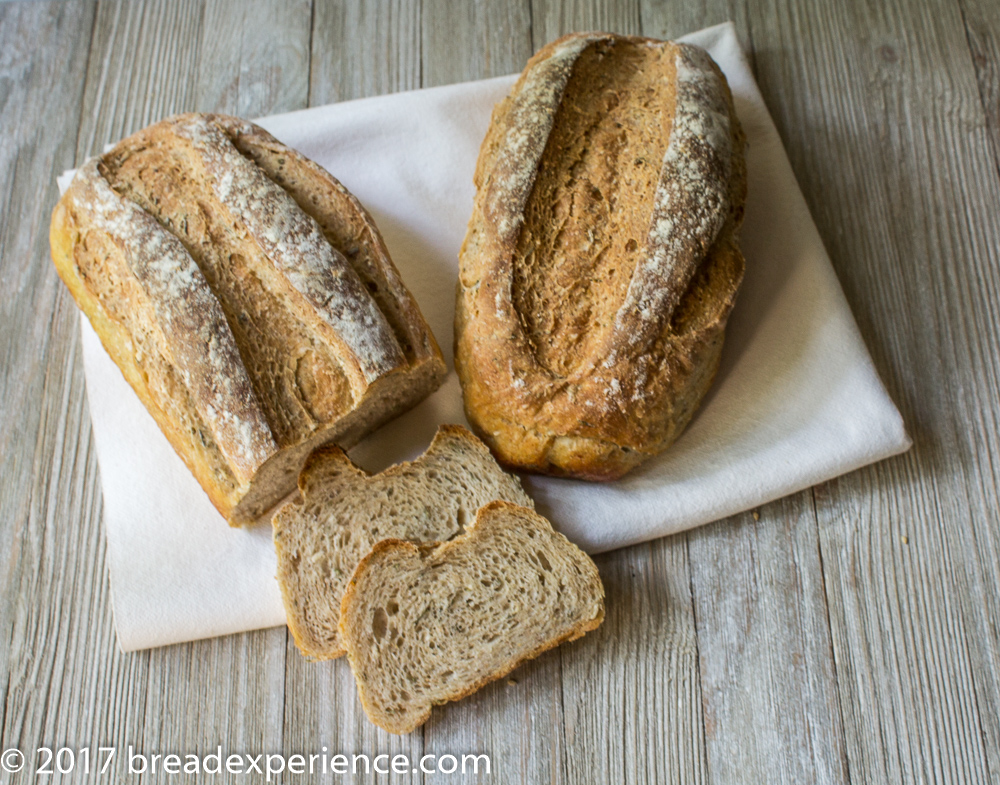
What type of beans should you use in this White Bean Bread?
You can use any type of white bean in this bread. If you’re not sure which beans you want to use, take a look at this article (shared by Kelly, our host kitchen) which compares the different types of white beans: 4 Types of White Beans: What’s the Difference?
I used dried cannellini beans that I cooked, drained, and pureed. I typically keep these beans on hand in dried form and/or canned so I can make one of my favorite soups, White Bean Soup with Kale, whenever the mood hits.
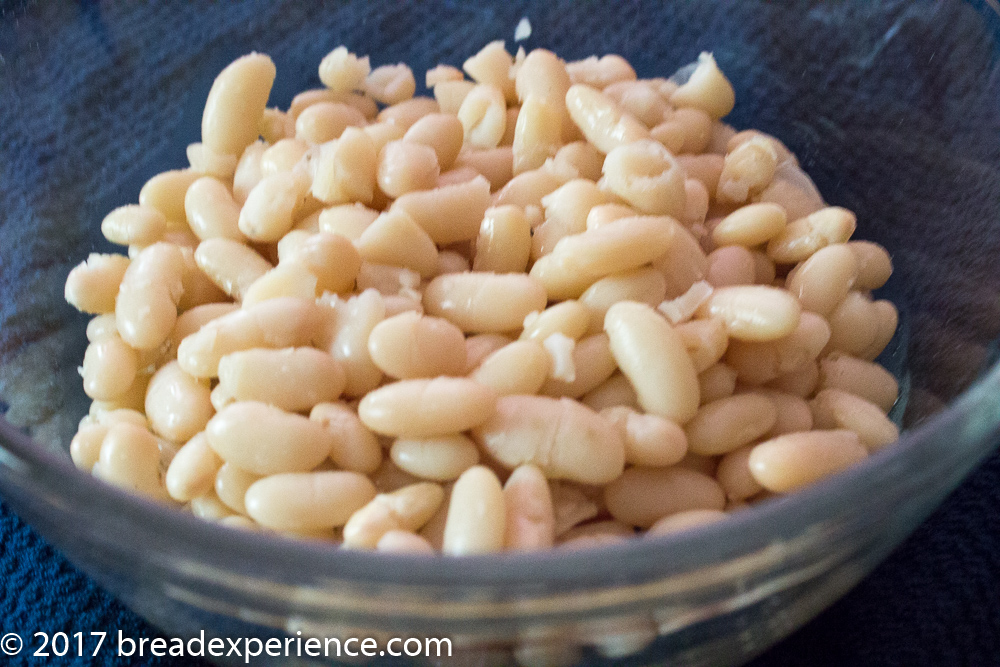
The good thing about using dried beans is that you can prepare a big batch of beans so you have lots to experiment with in different versions of this bread. And believe me, you’ll want to try different variations of this bread.
Why I reduced the yeast in these white bean loaves
Kelly warned us that these loaves rise quickly and can overproof quite easily. So I reduced the amount of yeast and gave it an overnight rise in the refrigerator.
Even though I reduced the amount of yeast, it still rose very quickly.
I also used rosemary instead of chives and sprouted red fife flour from the Maine Grain Alliance instead of regular whole wheat.
I got a bit carried away with the scoring
I baked these loaves in 4 x 8-inch glass pans and scored them with three vertical slashes instead of one straight down the middle.
This gave the loaves a unique “rustic” look. In retrospect, I should’ve stayed with the slash down the middle. I’ll try that next time.
These loaves tasted fabulous! I loved the rosemary flavor and aroma. I think a plain version would work equally well so I plan to try that and perhaps a sourdough version.
I’m looking forward to experimenting more with this bread. The possibilities are endless!
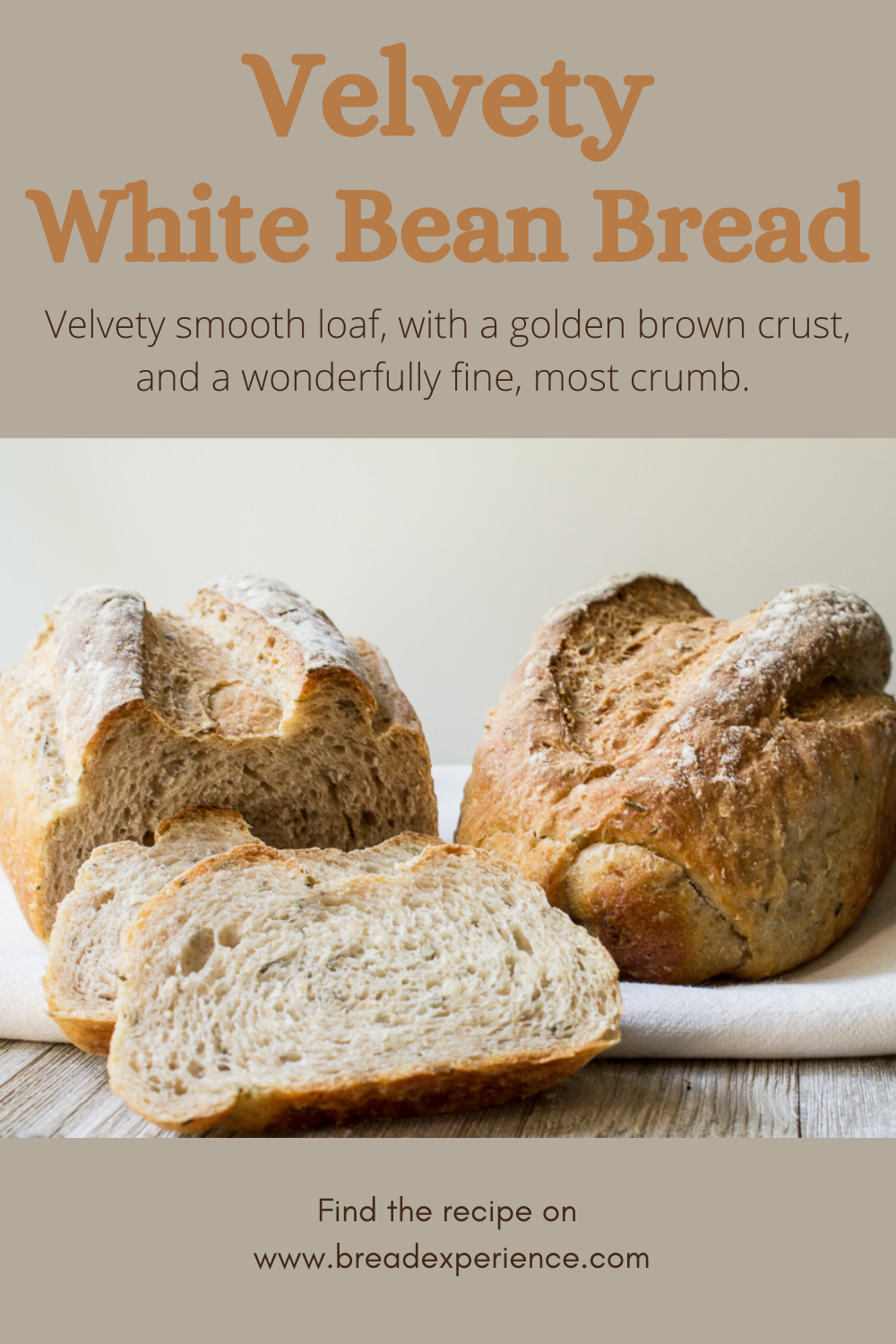
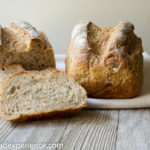
Velvety White Bean Bread with Rosemary
- Yield: Two 8x4-inch Loaves 1x
Description
White Bean Bread with Rosemary is velvety smooth, has a nice golden brown crust and a wonderfully fine, most crumb.
Ingredients
- 1 tsp / 4 grams instant dry yeast
- 1 – 1 1/2 cups / 250-300 grams lukewarm water, divided
- 2 cups / 200 grams drained, cooked or canned white beans, room temp (unsalted)
- 1 cup / 130 grams whole wheat flour (I used sprouted wheat)
- 1 tbsp / 14 grams olive oil
- 16 grams fine sea salt (use less if your beans are salted)
- 2–3 tbsp chopped rosemary (optional)
- 2 cups / 240 grams all-purpose flour, plus extra for sprinkling if needed
Instructions
- Dissolve yeast in water. Process beans in a blender or food processor until smooth (using ½ cup of the water), then transfer to a large bowl or stand mixer. Stir yeast mixture into beans. Add the whole wheat flour and stir for one minute, in one direction, to develop the dough. Add the oil, salt, and rosemary, if using and stir them in. Add 1 cup of the AP flour and stir in. Add the remaining AP flour and knead in with a dough hook, or work in and knead by hand for about 5 minutes, until smooth.
- Place dough in a bowl, cover, and let rise for 2 hours, until almost doubled in volume. (There should be about 2.6 pounds of dough.) Fold the dough after 45 minutes and again after 1 ½ hours. Let it rest the final 30 minutes without stretching and folding.
- Cover the bowl tightly and place in the refrigerator overnight. The next day, remove the dough from the refrigerator and knead it slightly to degas it.
- Alternately, proceed to the next step if you prefer to bake the loaves the same day.
- Shape dough into a round ball and let it rest on the counter for 30 minutes. Divide in half. Grease two 8×4″ pans. Form each portion of dough into a loaf and place seam side down in the pans.
- If you are proofing cold dough, let it proof for 2 ½ hours. If however, you are proofing dough that hasn’t been cold fermented, reduce the proofing time to about an hour. Watch the dough for proper rise. Check at 1 hour and continue to proof if needed.
- Preheat oven to 400ºF, have a spray bottle or small cup of water ready for steam. Slash each loaf lengthwise, place in oven and bake for 5 minutes, adding steam every couple minutes with the sprayer or cup. Bake for 15 minutes, then reduce heat to 375ºF and bake for 25 minutes until rich brown with a matte finish. Turn the loaves out and check for doneness. Finish cooling on a wire rack before slicing.
Notes
Adapted from Home Baking: The Artful Mix of Flour and Tradition around the World
- Category: Sandwich Bread
This month, the Bread Baking Babes is hosted by Kelly of A Messy Kitchen and we are baking Bean Bread. We’d love for you to bake along with us. Just refer to the submission instructions on Kelly’s post.
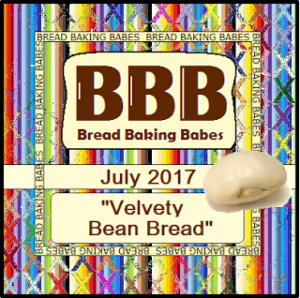
Please visit all of the Bread Baking Babes and check out their versions of this month’s recipe:
- Blog from OUR Kitchen – Elizabeth
- Bake My Day– Karen
- A Messy Kitchen – Kelly
- Judy’s Gross Eats – Judy
- Karen’s Kitchen Stories – Karen
- Notitie Van Lien – Lien
- My Diverse Kitchen – Aparna
- Bread Experience – Cathy
- Feeding My Enthusiasms – Elle
- Thyme for Cooking – Katie
- My Kitchen in Half Cups – Tanna
Happy Baking!
Cathy
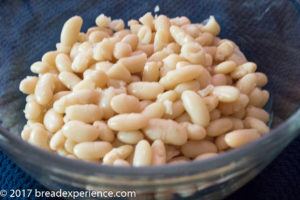
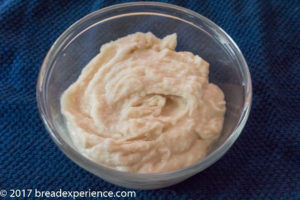
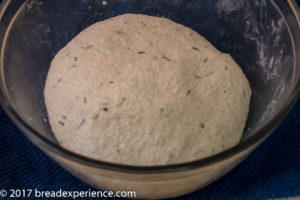
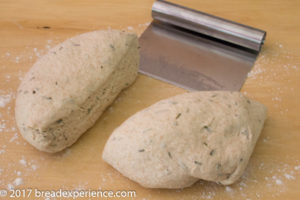
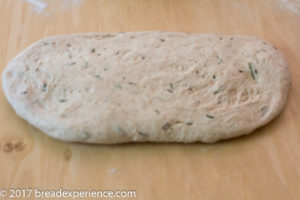
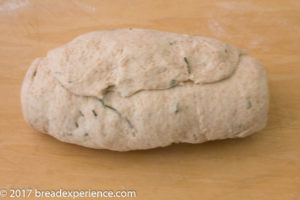
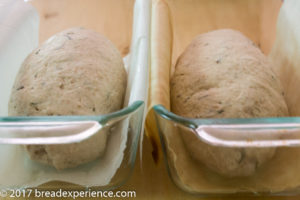
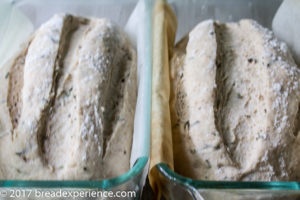
Kelly says
Your bread turned out absolutely gorgeous. I love your rosemary change, that is just perfection for flavor.
Cathy says
Kelly, thanks for hosting and choosing the bean bread! I really enjoyed this one.
Karen says
I bet your kitchen (and house) smelled amazing from the rosemary. I love the crumb you got too. Nice and even! Beautiful.
Cathy says
Thanks Karen! The house did smell wonderful.
Elizabeth says
Oh! Oh! Oh! I can hardly believe those slashes! And the loft on your bread. And you’re right, it really does live up to its name, doesn’t it? Velvety….
Good idea to use cannellini beans.
Cathy says
The cannellini beans worked well in this bread and I was surprised as you about the loft. It was such a fun bread to make!
Lien says
I love that three-slash-rustic-look, very pretty! I too like the rosemary addition, always great with bread (not a chive fan myself).
Cathy says
Thanks Lien! The rosemary was fab in this bread.
Katie Zeller says
I like velvety…. I like beans – and rosemary. Interesting article on the different beans.
Cathy says
Indeed!
Karin Anderson says
Interesting! I have used chickpea flour and fava bean flour in loaves before, but the bean-y flavor of fava beans (in gf-bread) can be little bit overpowering. Your loaf seems more balanced, and I love rosemary in bread.
It was very nice meeting you at the Kneading Conference, Cathy, I wish we had had more time to talk.
Cathy says
Hi Karen, it was nice meeting you as well. Thanks for being my “workshop” partner! This loaf did not taste like beans at all. It was very soft and delicious! I really liked it.
Josselyn says
I was confused about how much water to use in the dough, but kept it at 1/2 c to be safe and that worked out I think, it’s the next day and my dough looks like the picture and feels right to my novice bakers hands. Also in step 2, it says leave one the counter for the last 30 minutes, but never said anything about leaving the counter in the first place. I really hope this works out, I would love to have a go-to high fiber bread without always needing a lot of whole wheat flour.
Cathy says
Josselyn,
Thank you for your feedback. I’m sorry if the instructions were confusing. For the water, you will need between 1 cup to 1 1/2 cups, depending on how your flour absorbs liquid.
Regarding resting the dough on the counter for the final 30 minutes, I just meant to let it rest for the final 30 minutes. I can see how could be confusing. I will edit that part. If you see anything else that’s confusing, please let me know. And do let me know how your bread turns out.
Happy Baking!
Cathy
Josselyn says
But there’s also the 1/2c of water with the beans, so is it then 1/2 to 1 cup added in the mixer? Or 1/2c water with the beans AND 1c to 1 and 1/2c added to the mixer?
Cathy says
1 cup – 1 1/2 cups is the total amount of water. If you add 1/2 cup of water with the beans and 1/2 cup of water when mixing the dough, you may not need the additional 1/2 cup. However, you might need more water if the dough feels too dry.